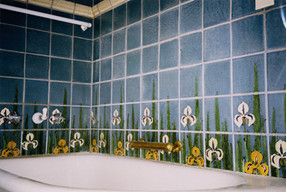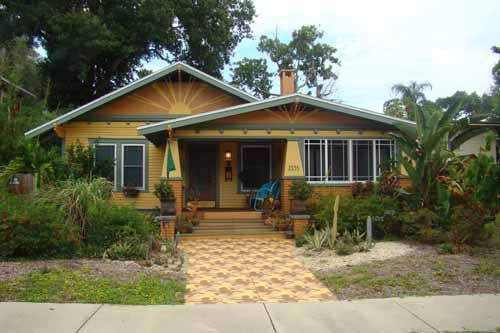


In a perfect world, the unique tile installations of one hundred years ago would all remain intact, treasured for their beauty and preserved as historic documents. But time, economics, and changing tastes often undermine their survival. Two extraordinary, large-scale domestic tile projects by the Grueby Faience and Tile Company - a boathouse floor from Newport, Rhode Island, and a complete bathroom from Bratenahl, Ohio, might easily have been sold off piecemeal as salvage panels or individual tiles. Instead, both were extracted from their original sites substantially complete.

With demolition looming and precious little time to act, the Two Red Roses Foundation made the unprecedented commitment to conserve thousands of tiles so that the original visions of architects, designers and clients to create two highly personal spaces would be safeguarded. This is the story of the rescued installations - one a testament to a love of the sea, the other a private retreat - the men and women who envisioned and financed them, and the images that inspired their imaginations.

The Iris Bathroom was another project by the Grueby Faience and Tile Company. In the mid-1910s, almost twelve hundred tiles were installed in the Ina and Oliver Clay House in Bratenahl, Ohio. The tiles created the scene of a lily-covered pond, hedged with long-stemmed irises. Between 2004 and 2005, over 2000 tiles were removed, restored and reconstructed for historic preservation and public exhibition by the Two Red Roses Foundation.
This small manuscript contains two essays and more than seventy-five full-color illustrations of two reconstructed Grueby faience tile installations and their history. Both installations have been restored and will be reassembled in their entirety for public exhibition in the soon to be built Museum of the American Arts and Crafts Movement in St. Petersburg, Florida. Arthur Curtiss James built the boathouse Aloha Landing in 1912 at his Newport, Rhode Island, estate, with the ceramic tile floor as the focal point. Created by the Boston-based Grueby Faience and Tile Company, the floor featured tile pieces that depicted James's yacht, the Aloha, as well as eighteen other sailing ships.

The Museum of American Arts and Crafts finds itself in very good company. Our soon to be neighbors have a very personal connection to the Arts and Crafts movement, they literally live with it. Located immediately west of downtown St. Petersburg, Florida and easily accessed by interstate I-275 (blocks from the MAACM location) the Kenwood Historic District is a 375-acre residential area best known for its historic bungalows. Developed as a working class neighborhood, it consists mostly of one-story and two-story single family homes constructed between 1912 and 1945.

In addition to the large number of historic buildings remaining in the neighborhood, many of the historic landscape and streetscape elements remain. The majority of the avenues, which run in an east-west direction, continue to be made of brick. Many of the sidewalks can still be found with hexagonal pavers. Granite curbs are also still evident along many of the streets, which are lined with majestic oaks, as well as jacaranda, palms, and pine trees.

The Historic Kenwood Neighborhood Association embraces the arts. They promote a wide range of activities that make living and working in this lovely neighborhood very pleasant. There are walking tours of bungalow homes and events such as the Bungalowfest, Art in the Park, Founder's Day, and various Porch Parties where residents, friends and interested citizens gather to exchange ideas, work with community leaders and plan for the future.
MAACM is very pleased to have Historic Kenwood as a neighbor and will work with the association on projects that further our efforts to bring lovers of architecture, art, and the Arts and Crafts movement together.